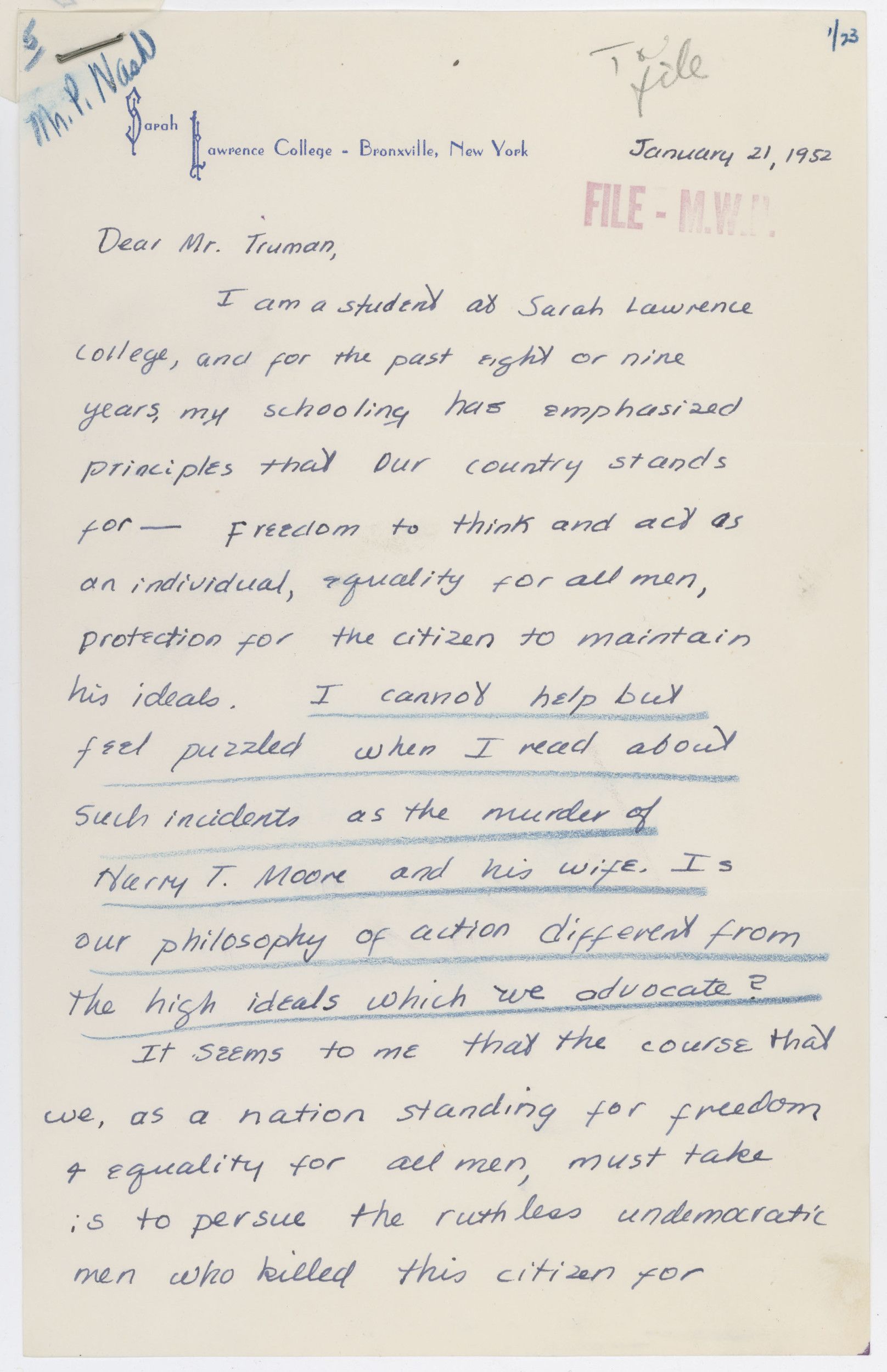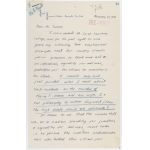Letter from Miss Arden Rappaport to Harry S. Truman Regarding Harry T. Moore
1/21/1952
Add to Favorites:
Add all page(s) of this document to activity:

Add only page 1 to activity:
Add only page 2 to activity:
On the evening of December 25th, a bomb was placed under the floor joists of the bedroom of Harry T. Moore, a former schoolteacher and the executive secretary of the Florida chapter of the National Association for the Advancement of Colored People (NAACP). He, his wife, and their daughter were asleep in their beds.
Moore had drawn attention to himself through his civil rights activities, which included registering African-Americans to vote, fighting unfair labor practices, and exposing cases of lynching and police brutality. His campaign against what he believed was the wrongful conviction of three African-American males accused of raping a white woman, known as the Groveland case, however, attracted the immediate attention of the Ku Klux Klan.
Moore died as a result of his injuries, followed by his wife nine days later. He was the first NAACP official murdered in the modern civil rights struggle. This letter from a Sarah Lawrence College student was one of thousands that poured into the White House from labor unions, private citizens, community organizations, and schoolchildren across the country, demonstrating the public outcry following the shocking murder of Harry and Harriette Moore.
Text adapted from “Letter to President Harry Truman about the Murder of Harry T. Moore” in the special "Teaching Difficult Topics with Primary Sources" November/December 2011 issue of the National Council for the Social Studies (NCSS) publication Social Education.
Moore had drawn attention to himself through his civil rights activities, which included registering African-Americans to vote, fighting unfair labor practices, and exposing cases of lynching and police brutality. His campaign against what he believed was the wrongful conviction of three African-American males accused of raping a white woman, known as the Groveland case, however, attracted the immediate attention of the Ku Klux Klan.
Moore died as a result of his injuries, followed by his wife nine days later. He was the first NAACP official murdered in the modern civil rights struggle. This letter from a Sarah Lawrence College student was one of thousands that poured into the White House from labor unions, private citizens, community organizations, and schoolchildren across the country, demonstrating the public outcry following the shocking murder of Harry and Harriette Moore.
Text adapted from “Letter to President Harry Truman about the Murder of Harry T. Moore” in the special "Teaching Difficult Topics with Primary Sources" November/December 2011 issue of the National Council for the Social Studies (NCSS) publication Social Education.
This primary source comes from the General Records of the Department of Justice.
National Archives Identifier: 6050580
Full Citation: Letter from Miss Arden Rappaport to Harry S. Truman Regarding Harry T. Moore; 1/21/1952; 144-18-205 Serial 7; Litigation Case Files, 1936 - 1997; General Records of the Department of Justice, Record Group 60; National Archives at College Park, College Park, MD. [Online Version, https://docsteach.org/documents/document/rappaport-truman-moore, April 25, 2024]Activities that use this document
- Responding to the Murder of Harry T. Moore
Created by the National Archives Education Team
Rights: No Known Copyright Learn more on our privacy and legal page.





